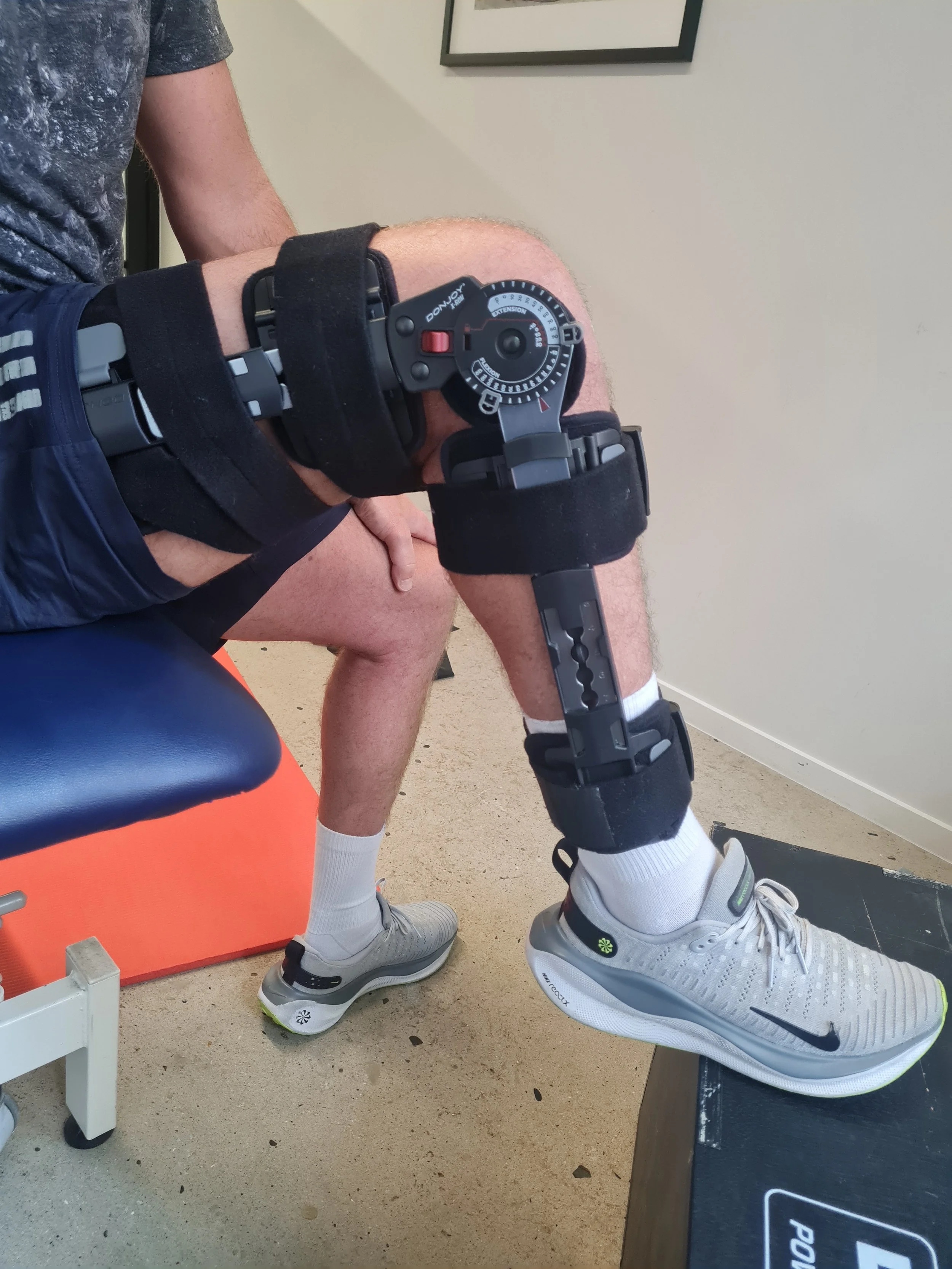Can The ACL Heal? Part two
Can a Torn ACL Really Heal? A Closer Look at the Research
This could be the biggest physio game-changer of my career.
For years, a torn anterior cruciate ligament (ACL) was seen as a one-way ticket to surgery—especially for active people.
The thinking used to be simple: a torn ACL couldn’t heal—like two ends of a snapped rope flapping around in the knee, with no way to reconnect. But that belief is now being challenged.
In our last blog, we shared two very different ACL recovery journeys—one surgical, one non-surgical—and hinted at something that’s really turning heads in sports medicine: the idea that a torn ACL might actually heal on its own.
As a physio, this is hugely exciting (geeky, I know). Our clinic is one of the few in New Zealand trialling the rehab-first Cross Bracing Protocol—in conjunction with Axis sports medicine we’re currently looking after patient number 7 in the Auckland trial—which makes it all feel very real.
Overall, it’s a massive shift that could change how we support and offer options to patients facing one of the biggest and most feared sporting injuries we see.
What Does the Research Say?
Emerging studies—particularly from Europe and Australia—are showing that in some cases, a torn ACL can heal with structured rehabilitation, no surgery required. This was unthinkable not that long ago.
A key 2022 study by Filbay et al. found that over half of participants with complete ACL ruptures showed signs of healing within 6–12 months, confirmed by MRI. These patients followed a progressive, well-structured rehab plan, with regular check-ins, imaging, and assessments.
Importantly, many reported excellent knee function and stability at two-year follow-up—without surgery.
What Do the Surgeons Think?
Orthopaedic thinking is shifting too.
Some surgeons remain understandably cautious, but more and more are open to a “wait and see” approach in the right cases—particularly when someone:
Isn’t experiencing instability (like giving way or buckling)
Isn’t aiming to return to top-level pivoting sports
Is willing to commit to a guided rehab plan and regular follow-up
Surgery Still Has a Role
Just to be clear—this isn’t an anti-surgery message. It’s about recognising that surgery may not be essential for everyone.
What Does This Mean for You?
It’s important to say: not all ACL tears will heal, and not everyone is a good fit for non-surgical management.
But this research gives both patients and physios a real reason to pause and weigh up both surgical and non-surgical options, rather than just defaulting to surgery.
It’s an exciting space to be working in. But it also means we need to stay sharp—staying evidence-based and making sure these approaches truly work for real people in real clinics.
Crunch Time for Patient #7
A big moment is coming up for patient number 7 (we’ll call him that for now)—he’s due for his three-month follow-up MRI in the next few weeks. This scan will tell us whether his ACL is showing signs of healing naturally after sticking to the non-operative Cross Bracing Protocol.
He’s nervously excited. So are we.
What Is the Cross Bracing Protocol?
Here’s the kicker...
How does being in a brace sound? (see pic above for actual brace)
Locked at 90 degrees (yep—right angles)
Non-weight-bearing and on crutches
Minimum of four weeks, 24 hours a day (yes, even while sleeping)
Then comes another 6–8 weeks still in the brace, but you’re allowed to start weight-bearing and gradually move through more range of motion.
And after all of that? You get a follow-up MRI and cross your fingers that it’s worked. If not, the next step may be surgery.
High risk? Maybe. But most big breakthroughs come from people willing to question the norm and try something different.
It’s not for everyone. But our patient hasn’t found it nearly as bad as it sounds—and right now, he’s back in the gym, going strong (brace still on and all).
In Summary
Can the ACL heal? In some cases—yes.
And if this continues to hold true, it could seriously reshape how we manage one of the most high-profile injuries in sport.
We’ll keep sharing updates on patient number 7 (with his full blessing!), and we’ll keep tracking the research as it evolves. It’s an exciting time to be working in this space.
If you’re dealing with an ACL injury—or supporting someone who is—get in touch. There’s more than one way forward, and we’re here to help you find the best path for you.
Want to read a bit more about pre and post-op options?
Check it out here: urbanathlete.co.nz/ua-pre-post-op


